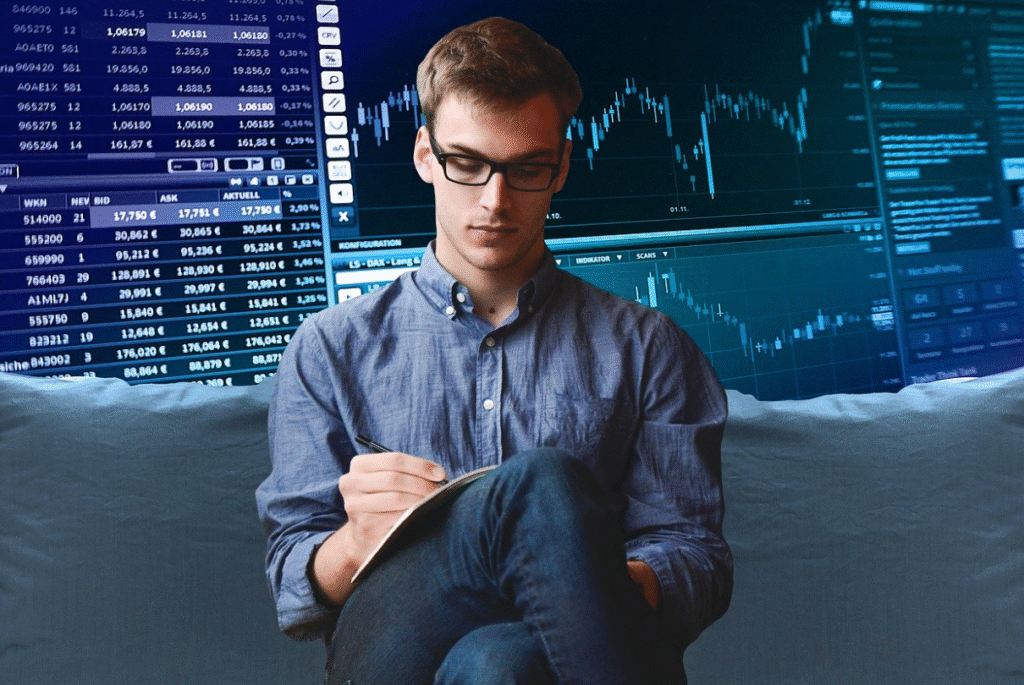There’s a moment almost every trader has faced. You’ve got a perfect setup—charts lined up, strategy ready. But when you go to deposit funds? The system lags.
Your money vanishes into cyberspace limbo, the market moves without you, and you’re left staring at a blank screen, wondering why you even bother.
That’s the traders’ room in a nutshell.
It’s not glamorous. You don’t see people on forums flexing screenshots of their traders’ room. And yet, if you’ve ever been stuck waiting three days for a withdrawal or couldn’t even find your account settings, you already know how much it matters.
The trader’s room is where your trading life actually happens.

So, What Exactly Is a Traders’ Room?
In the simplest sense, it’s a secure online hub—a personal dashboard where you manage the nuts and bolts of trading. Your deposits, withdrawals, verification, reports, and communication with the broker all go through it.
Think of it like a control tower at an airport. You’re the pilot, the market is the sky, and the trader’s room is the team telling you what’s clear, what’s delayed, and where to land. Without that guidance, you’re basically winging it blind.
Why It Exists (and Why You Should Care)
Forex isn’t a small market; it’s colossal.
According to the Bank for International Settlements, the daily turnover hit $7.5 trillion in 2022. When you’re competing in something that huge, every second counts. A trader’s room exists to shave off the friction—because when your funds or reports lag, opportunities disappear.
And let’s be real: part of the reason traders’ rooms matter so much is trust. You’re wiring money to a broker you might never meet in person. If the portal you log into every day looks like it was coded in 2003, and half the buttons don’t work? That doesn’t exactly scream reliability.
What You’ll Find Inside
Most traders’ rooms cover similar ground. The difference? How smoothly they run.
- Account tools: Create accounts, upload KYC docs, switch between demo and live.
- Money flow: Deposits, withdrawals, transfers—hopefully fast, but not always.
- Reports: Trade history, account statements, maybe even charts.
- Messages: Updates from your broker, compliance reminders, ticket support.
Sounds basic. But when you’re locked out of a withdrawal before a holiday weekend, “basic” suddenly feels like life or death.
The Connection to CRM Systems
Here’s something most traders never see. Behind the neat little dashboard you click through sits a CRM—Customer Relationship Management software—that ties it all together.
Brokers lean on CRMs to handle everything from leads to KYC checks to payment flows. When that system is solid, the trader’s room feels fast and frictionless. When it’s outdated, you’re staring at spinning wheels and sending “where’s my money?” emails.
Industry reviews of the best forex CRM systems point out exactly this link: advanced CRMs translate into smoother traders rooms. B2Broker’s 2025 roundup highlights CRMs that speed up KYC, sync deposits instantly, and cut reporting delays.
And from your perspective, that means deposits land faster, withdrawals don’t stall, and reports aren’t stuck in yesterday. You might not care what software your broker uses—but you’ll definitely care when your withdrawal lands in an hour instead of three days.
A Side-by-Side Reality Check
Sometimes it helps to see the difference in black and white:
| Feature | With Modern CRM | Without Modern CRM |
| Deposit speed | Seconds –1 hour | 24–72 hours |
| Account verification | Same day | Multiple days |
| Reporting | Real-time | Delayed or partial |
| Trader confidence | Strong | Weak |
Now ask yourself: which broker would you trust with your capital?
The Human Side of All This
Picture this. You spot a clean setup on USD/JPY—everything aligns, and your plan’s ready. But your account balance is short. You go to deposit, hit confirm, and… nothing. The money leaves your bank, but your trader’s room still shows zero. By the time it updates, the move’s over.
Flip it around: a modern trader’s room, integrated with a decent CRM, updates your funds in seconds. You take the trade, ride the move, and exit with profit. Same strategy, same market. The only difference? Infrastructure.
It’s those moments—missed trades because of clunky systems—that remind you the trader’s room isn’t some background feature. It’s the stage on which everything else plays out.
The Future of Traders’ Rooms
They’re not static. Like everything else in finance, they’re evolving.
Mobile as the Default
According to industry reports, more than 70% of retail forex traders now use mobile devices. A trader’s room that doesn’t run flawlessly on a phone? It’s basically useless in 2025.
Security Front and Center
Think fraud’s just background noise? PwC’s data says otherwise.
In the last two years, 51% of organizations reported being hit—and that’s the highest level they’ve recorded in two decades.” No surprise, then, that biometric logins, 2FA, and encrypted payment flows are becoming standard.
Personalization Creeping In
AI-driven dashboards are slowly making their way into traders’ rooms. Some now highlight risks, offer reminders, or suggest reports based on your activity.
The Takeaway
The traders’ room doesn’t get much spotlight. But it’s where everything actually happens—funds move, accounts get approved, reports tell you whether you’re bleeding or thriving.
A reliable, CRM-backed traders’ room won’t guarantee you win trades. But it will guarantee you’re not losing because of clunky systems. And honestly, in a market as ruthless as forex, that edge is worth more than most people realize.
So, next time you’re checking out a broker, don’t just glance at spreads or bonuses. Step inside their traders’ room. Click around. Because in forex, the room you’re working from isn’t just where you manage details—it’s where your edge begins.

